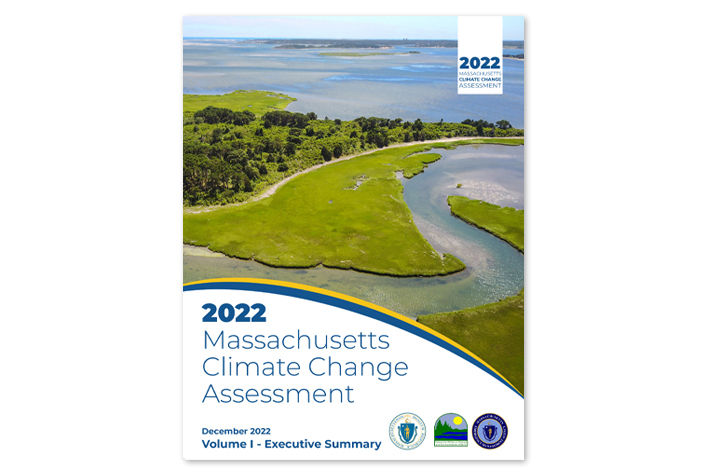The 1968 Analogy: What This Spring Means For Summer Drought Risk

Table of Contents
Spring Conditions as a Predictor of Summer Drought
The severity of summer droughts is often foreshadowed by spring conditions. Analyzing spring rainfall, soil moisture, and temperature anomalies provides crucial insights into potential water scarcity later in the year.
Analyzing Spring Rainfall and Soil Moisture
Low spring rainfall directly translates to depleted soil moisture reserves, significantly reducing the water available for plants and ecosystems during the summer months. Several key factors influence this relationship:
- Low spring rainfall: Insufficient precipitation during spring leaves the ground parched, creating a foundation for drought development.
- Impact of snowpack melt: The rate and timing of snowpack melt significantly impact water availability. Rapid melt can lead to short-term water abundance followed by rapid depletion. Conversely, slow melt can prolong water availability but might still be insufficient for the summer months.
- Monitoring soil moisture: Advanced techniques, including remote sensing and ground-based sensors, are crucial for accurately assessing soil moisture levels across different regions.
- Regional variations: Spring conditions vary significantly geographically. What might be considered dry in one region may be normal in another, highlighting the importance of regional-specific analysis.
Temperature Anomalies and Evapotranspiration
Unusually high spring temperatures can accelerate evapotranspiration – the process by which water is transferred from the land to the atmosphere. This significantly reduces soil moisture, exacerbating drought risk:
- Accelerated evapotranspiration: Higher temperatures lead to increased evaporation from soil and plant surfaces, drying out the land more quickly.
- Sunshine hours and wind speed: Prolonged sunshine and high wind speeds further intensify evapotranspiration, leading to drier conditions.
- Temperature data in drought prediction: Meteorological data, including temperature and sunshine hours, are essential inputs in sophisticated drought prediction models.
- Comparing with historical averages: Analyzing current spring temperatures against long-term historical averages helps determine if the current conditions are anomalous.
The 1968 Drought: A Case Study
The spring of 1968 was characterized by below-average rainfall and above-average temperatures across many regions, mirroring conditions observed in some areas this spring. This led to:
- Meteorological data from 1968: Records show significantly low rainfall and high temperatures in the months leading up to the 1968 summer drought.
- Comparison with current conditions: A direct comparison of rainfall and temperature data from 1968 and the current year reveals striking similarities in several key areas.
- Severity of the 1968 drought: The 1968 summer drought was exceptionally severe, causing widespread agricultural losses, water shortages, and economic hardship.
- Lessons from 1968: The 1968 drought serves as a stark reminder of the potential consequences of seemingly minor variations in spring conditions.
Other Factors Influencing Summer Drought Risk
While spring conditions provide critical clues, other factors contribute to summer drought risk:
Winter Precipitation and Snowpack
The winter months are crucial for water storage. Adequate snowpack serves as a vital water reservoir for the summer months:
- Snowpack monitoring: Remote sensing techniques and ground measurements are used to monitor snowpack levels throughout the winter.
- Early snowmelt: Early or rapid snowmelt can lead to short-term water abundance, followed by a rapid decline in water availability during the summer.
- Correlation with summer drought: A direct correlation exists between low winter precipitation and increased summer drought severity.
Groundwater Levels
Groundwater plays a significant role in mitigating drought impacts. However, over-extraction and depletion pose a threat:
- Groundwater monitoring: Wells and sensors are used to monitor groundwater levels, providing an indication of the underlying water resources.
- Groundwater depletion: Excessive groundwater pumping can lead to depletion, reducing its ability to buffer against drought.
- Relationship with surface water: Groundwater levels are closely tied to surface water availability, influencing streamflows and lake levels.
Climate Change Impacts
Climate change is undeniably influencing long-term drought patterns, exacerbating drought risks:
- Increased frequency and intensity: Global warming contributes to more frequent and severe droughts.
- Changes in precipitation patterns: Climate change alters precipitation patterns, resulting in shifts in both timing and intensity of rainfall.
- Human activities: Human activities, such as deforestation and greenhouse gas emissions, exacerbate the effects of climate change.
Conclusion: Preparing for Summer Drought Risk Based on the 1968 Analogy
The striking similarities between spring conditions in 1968 and this year underscore the potential for a severe summer drought. While spring conditions offer important insights, it's crucial to consider winter precipitation, groundwater levels, and the long-term effects of climate change. Proactive water management strategies are essential to mitigate the potential impacts. Stay informed about drought predictions in your region and implement water conservation measures to reduce summer drought risk. Understand your region's summer drought risk and take steps to prepare for potential water shortages. Visit your local water authority website or drought monitoring portals for more information and resources to mitigate summer drought risk.

Featured Posts
-
 One Piece A Look At Pirates Who Served More Than One Crew
May 28, 2025
One Piece A Look At Pirates Who Served More Than One Crew
May 28, 2025 -
 Psvs Eredivisie Title Win A Veterans Day Celebration For Perisic And De Jong
May 28, 2025
Psvs Eredivisie Title Win A Veterans Day Celebration For Perisic And De Jong
May 28, 2025 -
 Rising Rainfall In Western Massachusetts A Climate Change Impact
May 28, 2025
Rising Rainfall In Western Massachusetts A Climate Change Impact
May 28, 2025 -
 Ipswichs Lifeline Broadhead Secures Win Against Bournemouth
May 28, 2025
Ipswichs Lifeline Broadhead Secures Win Against Bournemouth
May 28, 2025 -
 Tennis Star Sinner Back From Suspension Targeting French Open Success
May 28, 2025
Tennis Star Sinner Back From Suspension Targeting French Open Success
May 28, 2025
Latest Posts
-
 Book Now 30 Off Lavish Spring Hotel Accommodation
May 31, 2025
Book Now 30 Off Lavish Spring Hotel Accommodation
May 31, 2025 -
 Limited Time Offer 30 Off Lavish Spring Hotel Stays
May 31, 2025
Limited Time Offer 30 Off Lavish Spring Hotel Stays
May 31, 2025 -
 The Reality Of Ai Why It Doesnt Learn And What That Means For Users
May 31, 2025
The Reality Of Ai Why It Doesnt Learn And What That Means For Users
May 31, 2025 -
 Responsible Ai Addressing The Limitations Of Current Ai Learning
May 31, 2025
Responsible Ai Addressing The Limitations Of Current Ai Learning
May 31, 2025 -
 Up To 30 Off Book Your Lavish Spring Hotel Stay Today
May 31, 2025
Up To 30 Off Book Your Lavish Spring Hotel Stay Today
May 31, 2025
